As the volume, variety, and velocity of data increase, data pipelines become critical for businesses to process and analyze this bulk load in real time. Strict compliance requirements raise the stakes, thus calling for a robust architecture that facilitates modern analytics and optimizes workflows. Think of an enterprise managing one petabyte of data across five different platforms— traditional data management infrastructure doesn’t suffice.

Fortunately, the ultimate solution is a modern data pipeline platform, which automates and streamlines data movement across the entire tech stack. It ensures seamless data flow from source to destination while handling all the transformation, validation, and monitoring tasks. As organizations adopt data-driven decision-making, scalable, reliable, and efficient data pipelines are no longer optional.
These pipelines are the backbone of modern analytics and machine learning applications, enabling businesses to derive actionable insights from vast data streams. At the heart of this capability lies data engineering, the practice of designing and building infrastructure that enables companies to collect, process, and analyze large-scale data efficiently.
Table of Contents
Qualities of an Excellent Data Pipeline
Different Types of Data Pipeline Platforms
Data Engineering at Glance
Business leaders already have access to vast and varied data required for a holistic view of their operations. This data includes social media interactions, marketing metrics, employee performance reports, trend forecasts, and more. Every “byte” of this data has the potential to drive potential business decisions. In other words, acquiring data is not the challenge; however, processing and analyzing massive quantities is a different ball game, calling for data engineering.
Data engineers develop and deploy data pipelines and workflows that efficiently transform raw data into ready-to-use datasets. It is a vital component of modern data platforms that allow businesses to analyze and use data, irrespective of its source or format. As data engineers govern data management downstream, they’re responsible for the overall health of the infrastructure.
Listed below are the key use cases of data engineering, highlighting why this process is important for enterprises:
1. Data Collection, Storage, and Management
Data engineers streamline data intake and storage to ensure seamless access and analysis. Moreover, they establish processes that are easy to maintain and scale as a business grows. Their efforts enable the discipline of DataOps, which automates data administration.
2. Real-Time Data Analysis
The right data pipelines enable businesses to automate data collection, cleaning, and formatting for effective analytics. This makes data easily accessible and empowers stakeholders, including data analysts, business analysts, executives, and CXOs to make strategic decisions. As data flows into the model, which is a dynamic representation of an organization’s current state, it paves the way for real-time machine learning.
3. Artificial Intelligence and Machine Learning Applications
From robotic surgeries and autonomous vehicles to the fast-growing field of gen AI, the applications of AI/ML algorithms are wide and varied. Continuous data streams are required to train these AI/ML models and improve their accuracy. Machine learning experts use data pipelines to move data from the collection site to the models that use it for training.
However, with markets flooded with a wide range of data pipeline platforms, choosing the right one might be the trickiest part of the entire adoption process. The options range from cloud-native solutions to open-source frameworks, each with its advantages and limitations. For example, some platforms might struggle with batch processing but excel in real-time streaming.
In another instance, some platforms offer scalability but require dedicated technical expertise. Thus, it’s not always a choice of which is the “best” but what makes a better fit for enterprise-specific applications and scenarios.
Qualities of an “Excellent” Data Pipeline
With a plethora of data pipeline platforms available, comparing the options can lead to a never-ending rabbit hole. It’s even difficult to determine what is important with all the market jargon. That said, listed below are the core capabilities that matter:
- Reliable Data Movement: The accuracy and consistency of data movement determine how well the pipeline performs. Top platforms maintain unambiguous lineage tracking, gracefully handle failures, and ensure zero data loss.
- Practical Monitoring: In the event of pipeline failure, stakeholders should know what happened and the reason behind the event. Thus, look for platforms with automated alerts, live monitoring, and detailed logs to resolve the issues quickly.
- Real-World Scalability: Growth involves managing the increasing volume and complexity of data. The most effective platforms scale both pipeline complexity and computing power.
- Inbuilt Security: Security can’t be neglected. Granular access controls, end-to-end encryption, and comprehensive audit trails are prerequisites for modern platforms to meet compliance requirements.
- Effective Cost Control: The top platforms assist enterprises in managing costs without compromising functionality. Go for solutions that automatically optimize resource allocation and offer usage-based pricing that scales with business needs.
- Flexibility in Integration: Stakeholders must ensure the data pipeline platform works well with the existing tech stack. This implies having robust APIs, pre-built integrators for common sources, and the ability to customize integrations.
All in all, stakeholders must focus on platforms that nail these basics while catering to business-specific needs. Having the right data pipeline platform in place enables enterprises to grow without overwhelming their team or budget and capitalize upon the opportunities.
Different Types of Data Pipeline Platforms
A one-size-fits-all approach is no longer valid, and that’s why there are different data pipeline platforms. Though traditional ETL tools have helped enterprises for a long time, these prove ineffective when managing modern data. Thus, the different data pipeline platforms have their strengths and limitations, and understanding these helps enterprises narrow down their options and find the most apt one. Take a look:
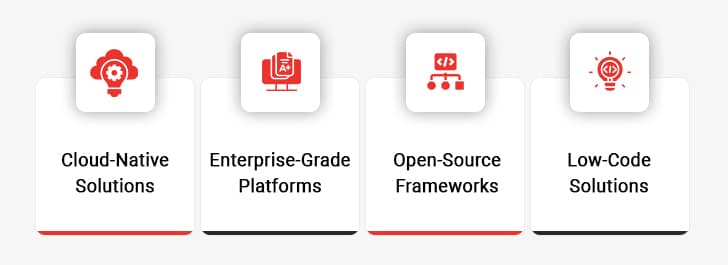
I. Cloud-Native Solutions
Designed particularly for cloud environments, cloud-native solutions leverage the scalability and functionality of major cloud providers. These solutions allow automatic scaling and seamless integration with cloud services at a pay-as-you-go pricing model.
II. Enterprise-Grade Platforms
As the name suggests, enterprise-grade platforms specifically cater to large-scale operations. These comprehensive platforms are power-packed with advanced features such as enterprise-grade security, robust governance, and multi-cloud support.
III. Open-Source Frameworks
With open-source framework platforms, enterprises have complete control over their data pipeline infrastructure. Data engineering tools such as Apache Airflow and Apache NiFi, which provide free licensing and limitless customization, are generally used to build these solutions. However, the only drawback is that their implementation and maintenance require technical expertise.
IV. Low-Code Solutions
The low-code solutions allow even non-technical users to develop data pipelines using graphic interfaces and pre-built components. These platforms are an excellent option for teams that need to move quickly without requiring much technical knowledge. However, these solutions may prove ineffective while handling extremely complex data pipelines.
Knowing these categories is important for enterprises to make informed choices. However, these lines are blurring as many modern platforms integrate components from multiple categories to provide more comprehensive solutions. So, the key lies in matching enterprise-specific needs with functionality rather than more features or control.
Best Data Engineering Tools and Frameworks
Infrastructure plays a huge role in enabling organizations to make the most of their data and remain competitive in the dynamic business landscape. Thus, organizations must adopt cutting-edge data engineering tools and technologies tailored to their requirements. Below are the top data engineering tools and frameworks that enterprises must know:
1. Apache Kafka
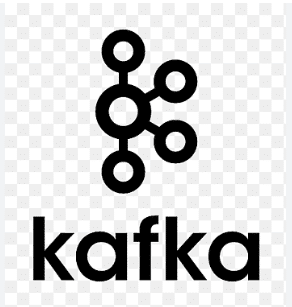
Launched in 2011, this technology allows data engineers to build a data pipeline that can effectively handle sheer volumes of data. Apache Kafka can ingest and process any type of data in real time and store it to facilitate seamless retrieval when required. Moreover, this tool has built-in, high-availability features, implying that data remains accessible at all times.
Its real-time data streaming and event-driven architecture make it a go-to solution for large corporations and smaller businesses looking for scalable pipelines. In short, Apache Kafka lays the foundation for data engineering frameworks for managing streaming data, enabling businesses to build scalable, fault-tolerant pipelines. In short, it plays a key role in managing fault-tolerant data streams, allowing businesses to take actions in real time and improve operational efficiency.
| Key Features | Advantages | Disadvantages |
|---|---|---|
| High-throughput distributed messaging system and real-time data streaming with durability and fault tolerance | Ideal for real-time analytics and event-driven architectures | Complexity in managing and scaling clusters |
| Integration with various tools for seamless data flow | Open-source, cost-effective solution with a large community | Requires expertise to optimize performance |
2. Apache Spark
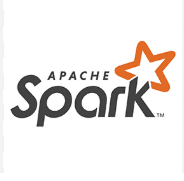
This open-source cluster computing framework, launched in 2014, is still the leader in distributed data processing. Apache Spark efficiently handles batch and stream processing as well as machine learning algorithms and is widely used by well-known brands including Netflix and Spotify. Its scalability and speed make it a go-to solution for enterprises seeking powerful tools for data engineering to handle complex workloads.
Thus, Apache Spark is an ideal solution for building scalable and efficient data pipelines that can process large-scale datasets. Its seamless integration with databases, file systems, and data lakes makes Apache Spark a preferred choice for building pipelines across diverse data sources.
| Key Features | Advantages | Disadvantages |
|---|---|---|
| Distributed data processing (batch and real-time) engine for large-scale analytics | High performance powered by in-memory processing | Steep learning curve for beginners |
| Libraries for ML, graph analytics, and SQL queries | Versatile framework compatible with multiple data sources | Requires substantial resources for optimal performance |
3. dbt (Data Build Tool)
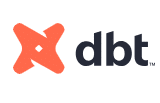
dbt, a command-line tool launched in 2016, provides a safe environment for ETL tasks. Its modular architecture and version-controlled approach enables data engineers and analysts to create and maintain a robust data transformation workflow. Data engineers can use SQL to build, test, and document models, further using Git to deploy them.
Moreover, it seamlessly integrates with modern data stacks, including cloud data warehouses such as Snowflake, BigQuery, and Redshift. dbt is crucial for managing the transformation layer of data pipelines and enabling a consistent approach to analytics.
| Key Features | Advantages | Disadvantages |
|---|---|---|
| Data transformations using SQL with version control | Simplifies data transformation workflows | Limited functionality beyond data transformation |
| Analytics engineering for data warehouses with automated testing and documentation of transformations | Integration with key cloud-based data warehouses | Requires familiarity with SQL |
4. Apache Airflow

Apache Airflow is widely recognized among tools used in data engineering for efficiently orchestrating complex workflows and data pipelines. Launched in 2015, the tool facilitates seamless management and automation of ETL processes by enabling data engineers to author, schedule, and monitor workflows. Airflow’s adaptable DAG (Directed Acyclic Graph) structure enables clear visualization and tracking of data flow, ensuring that data pipelines operate smoothly.
Its rich ecosystem of plugins and integrations makes Airflow a core tool for automating and managing complex data workflows. In short, Apache Airflow is a preferred orchestration tool for scheduling, monitoring, and managing workflows.
| Key Features | Advantages | Disadvantages |
|---|---|---|
| Workflow orchestration with directed acyclic graphs (DAGs) | Scalable and flexible in executing batch or real-time tasks | Can become complex to manage with increasing DAG size |
| Extensible through custom plugins and operators | Strong community support and open-source license | Dependency management can be challenging |
5. Snowflake

As a leader in cloud data platforms, Snowflake offers data lakes, data warehousing, data sharing, and more. Its ability to integrate effortlessly with data engineering tools and technologies such as Spark and dbt makes it an essential part of the modern pipeline for real-time analytics.
Its unique architecture separates computing and storage, facilitating scalability and enabling organizations to store and analyze data in a unified environment. Thus, Snowflake, with enhanced performance and security features, leads as a cloud-native data warehouse.
| Key Features | Advantages | Disadvantages |
|---|---|---|
| Cloud-native data warehouse with scalability and improved performance | User-friendly interface with no infrastructure management requirement | Surge in costing with high usage |
| Multi-cloud support and inbuilt security features | Exceptional performance in analytical queries | Limited support for certain data formats |
6. Google Cloud Dataflow
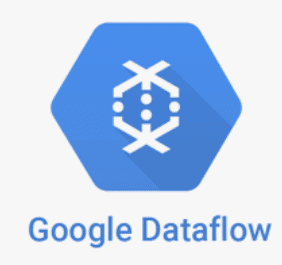
Google Cloud Dataflow, powered by Apache Beam, is essential for organizations requiring serverless tools for data engineering tailored to cloud-native environments. Its serverless environment makes workload management and dynamic scaling easier without requiring infrastructure management. Simply put, enterprises can ingest, process, and analyze fluctuating volumes of data in real-time.
Moreover, Dataflow’s integration with the Google Cloud environment allows data engineers to build robust data pipelines using Google’s analytics and machine learning capabilities. Google Cloud Dataflow, powered by Apache Beam, helps in building unified streams and batch data processing pipelines.
| Key Features | Advantages | Disadvantages |
|---|---|---|
| Based on Apache Beam SDK for portability | Reduces operational overhead with managed infrastructure | Limited to Google Cloud’s ecosystem |
| Autoscaling and real-time analytics capabilities with fully managed stream and batch processing service | High scalability and seamless integration with Google Cloud services | Expensive for small-scale projects |
7. Fivetran

Fivetran’s automation capabilities position it as one of the best data engineering tools for streamlining ETL processes. It is a fully managed ETL service that offers prebuilt connectors for various data sources and automates data integration. For organizations looking to streamline data ingestion and integration, Fivetran’s automated data sync and scalability are highly reliable.
| Key Features | Advantages | Disadvantages |
|---|---|---|
| Automated data pipelines for ETL/ELT workflows | Rapid setup and deployment, and minimal maintenance with schema evolution handling | Limited customization options for data transformations |
| Prebuilt connectors for diverse data sources | Focused on simplicity for non-technical users | Additional subscription costs |
8. Terraform
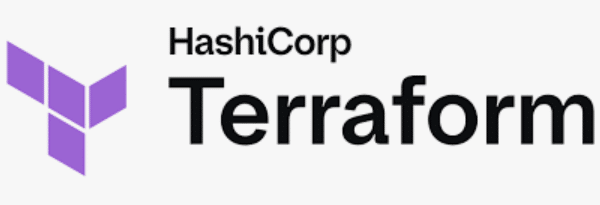
Terraform stands out among data engineering frameworks by enabling teams to build and maintain scalable data infrastructure. Terraform uses HashiCorp Configuration Language (HCL), a declarative language, to describe the infrastructure, generate a plan, and execute it to provision the infrastructure.
Additionally, the tool offers plugins, called providers, to let users communicate with other APIs and cloud providers. Therefore, Terraform is a vital tool for managing infrastructure as code and is used for provisioning, managing, and scaling cloud resources for data pipelines.
| Key Features | Advantages | Disadvantages |
|---|---|---|
| Infrastructure-as-Code (IaC) for provisioning and managing resources | Simplifies infrastructure management with reusable configurations | Requires understanding of IaC principles |
| Support for multi-cloud environments and modular configurations with extensive provider ecosystem | Promotes collaboration with version-controlled infrastructure code | Debugging complex configurations can be time-consuming |
9. Databricks
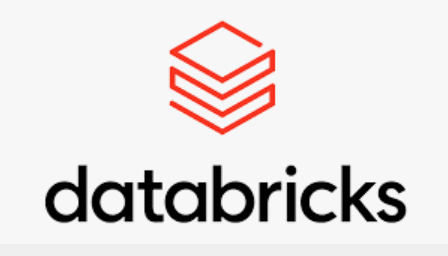
Databricks, a versatile data analytics platform, when combined with Apache Spark, offers a collaborative workspace for data engineers, business analysts, and data scientists. An invaluable tool used for data engineering, it offers a unified environment for data processing, analytics, and machine learning. Databricks’ managed Spark service automates several complex tasks associated with big data processing and simplifies cluster management, thereby increasing productivity. That said, Databricks is ideal for building end-to-end data pipelines.
| Key Features | Advantages | Disadvantages |
|---|---|---|
| Unified platform for big data and AI workloads. Collaborative workspace for data teams | Streamlines end-to-end data workflows | Higher cost for small organizations |
| Built on Apache Spark with support for ML and analytics | Combines data engineering, analytics, and ML in one platform | Requires expertise in Spark for advanced use cases |
10. Kubeflow
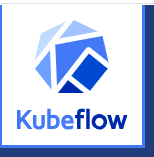
Kubeflow bridges the gap between data engineering and ML, offering scalable solutions for modern workflows. It is a vital tool for businesses making investments in AI-driven data pipelines and machine learning.
It simplifies building, monitoring, and managing end-to-end data pipelines that incorporate both data engineering and machine learning tasks by enabling data engineers to scale and automate ML workflows.
| Key Features | Advantages | Disadvantages |
|---|---|---|
| Integration with popular ML frameworks like TensorFlow and PyTorch | Tailored for AI/ML pipeline management | Complexity in setup and configuration |
| Support for Kubernetes for scalability | Highly customizable for diverse use cases | Requires Kubernetes expertise |
Closing Lines
As data continues to grow in complexity and scale, the demand for efficient, scalable data engineering tools is at an all-time high. The tools and frameworks highlighted above represent the forefront of innovation, catering to diverse needs from real-time streaming to AI-powered analytics. While no single tool is a panacea, selecting the right combination based on organizational requirements ensures a robust and efficient data pipeline. Businesses investing in these technologies are better equipped to unlock the full potential of their data, driving innovation and maintaining a competitive edge in 2025 and beyond.





